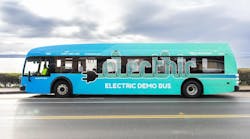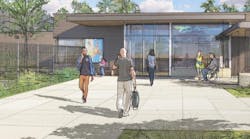BC Transit to add more than 900 buses to fleet during next three to five years
BC Transit has updated its fleet acquisition strategy and plans to add more than 900 new buses to its fleet during the next three to five years.
BC Transit’s fleet acquisition strategy is designed to:
- Achieve greenhouse gas (GHG) emissions targets set by the province of British Columbia, which is 40 percent reduction in bus emissions by 2030 and 60 percent by 2040.
- Optimize the fleet and replace aging vehicles.
- Bring in new vehicles to support service expansion.
While BC Transit works towards its goal of a zero-emissions fleet, the organization will continue to purchase a variety of buses.
The agency has received funding for 141 electric buses, including 125 heavy duty, 10 double decker and six light duty buses. Currently, 125 heavy duty electric buses are on order with New Flyer and Nova Bus. BC Transit notes the first batch of these buses are on the production line and the first 10 electric buses are expected to arrive for use in the Victoria Regional Transit System starting in early 2025.
In addition to electric buses, BC Transit is in the process of purchasing 80 diesel double decker buses to fill immediate transit needs in the Victoria Regional Transit system. BC Transit also intends to procure approximately 105 heavy duty hybrid buses. To support greenhouse gas reductions with the combustion fleet, BC Transit continues to incorporate the use of hydrogenated derived renewable diesel, which can be used in regular diesel engines and significantly reduces GHG emissions. Light duty gasoline buses to support handyDART services are also part of the fleet acquisition strategy.
BC Transit says it needs to acquire approximately 590 buses between 2026 and 2029 to replace aging buses. As service expansion needs are identified and approved, the organization estimates that a further 312 net-new buses could be required between now and 2029.





